We've found 1000 matches for your search. Order by
Results
-
 £24.95
£24.95La Mantilla (Cornet Solo with Brass Band - Score and Parts)
Estimated dispatch 7-14 working days
-
 £24.95
£24.95Mountain Echoes (Cornet Solo with Brass Band - Score and Parts)
Estimated dispatch 7-14 working days
-
 £24.95
£24.95Mountain Melody (Tenor Horn Solo with Brass Band - Score and Parts)
Estimated dispatch 7-14 working days
-
 £24.95
£24.95Napoli (Cornet Solo with Brass Band - Score and Parts)
Estimated dispatch 7-14 working days
-
 £19.95
£19.95Out of the Silence (Cornet Solo with Brass Band - Score and Parts)
Estimated dispatch 7-14 working days
-
 £24.95
£24.95Rag and Bone (Trombone Solo with Brass Band - Score and Parts)
Estimated dispatch 7-14 working days
-
 £24.95
£24.95Recitative and Romance (Trombone Solo with Brass Band - Score and Parts)
Estimated dispatch 7-14 working days
-
 £24.95
£24.95Say Ye Who Borrow (from the Marriage of Figaro) (Flugel or Cornet Solo with Brass Band - Score and Parts)
Estimated dispatch 7-14 working days
-
 £44.95
£44.95Song and Dance (Cornet Solo with Brass Band - Score and Parts)
Estimated dispatch 7-14 working days
-
 £24.95
£24.95Sound an Alarm (Trombone Solo with Brass Band - Score and Parts)
Estimated dispatch 7-14 working days
